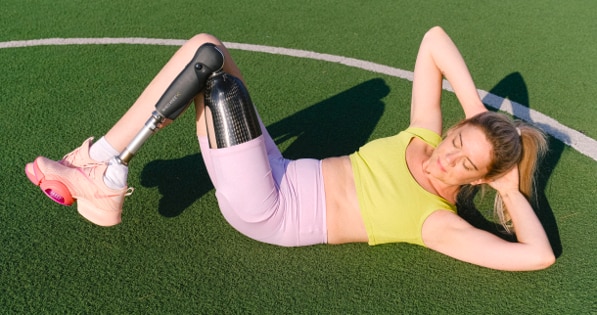Why does my sweat smell, and how to prevent body odour?
Unlike most types of sweat, cold sweats aren’t caused either by heat or working your body hard. They’re actually caused by our body’s ‘fight or flight’ response, which is designed to protect us in dangerous situations.
When we feel nervous, anxious or threatened, our breathing and heart rate naturally speed up, sending our body into ‘overdrive’. That, in turn, switches on our sweat glands to keep us cool.
A cold sweat could be brought on simply by watching a scary movie. But if you’re experiencing regular cold sweats, there are certain health conditions your body may be trying to make you aware of. So, you might want to talk to your doctor.
1 (Source: Leyden, J.J., McGinley, K.J., Holzle, E., Labows, J.N., Kligman, A.M. (1981) The microbiology of the human axilla and its relationship to axillary odor. J. Invest. Dermatol., 77, 413-416)
2 (Source: Wigley, L. (2000) The apocrine gland - A review of current knowledge, P00 0256. Hollinger, M., Sheikholislam, B. (1991) Effects of dietary alteration on trimethylaminuria as measured by mass spectrometry. J. Int. Med. Res., 19, 63-66. Senol, M., Fireman, P. (1999) Body odour in dermatologic diagnosis. Cutis, 63, 107-111)
2.5 (Source: Leyden, J.J., McGinley, K.J., Holzle, E., Labows, J.N., Kligman, A.M. (1981) The microbiology of the human axilla and its relationship to axillary odor. J. Invest. Dermatol., 77, 413-416. Lindsay, S.L., Holmes, S., Corbett, A.D., Harker, M., Bovell, D.L. (2008) Innervation andreceptor profiles of thehuman apocrine (epitrichial) sweatgland: routesforintervention inbromhidrosis. Br.J.Dermatol. 159, 653-660)
3 (Source: Leyden, J.J., McGinley, K.J., Holzle, E., Labows, J.N., Kligman, A.M. (1981) The microbiology of the human axilla and its relationship to axillary odor. J. Invest. Dermatol., 77, 413-416)
4 Source: Taylor, D., Daulby, A., Grimshaw, S., James, G., Mercer, J., Vaziri, S. (2003) Characterization of the microflora of the human axilla. Int. J. Cosmet. Sci., 25, 137-145)





